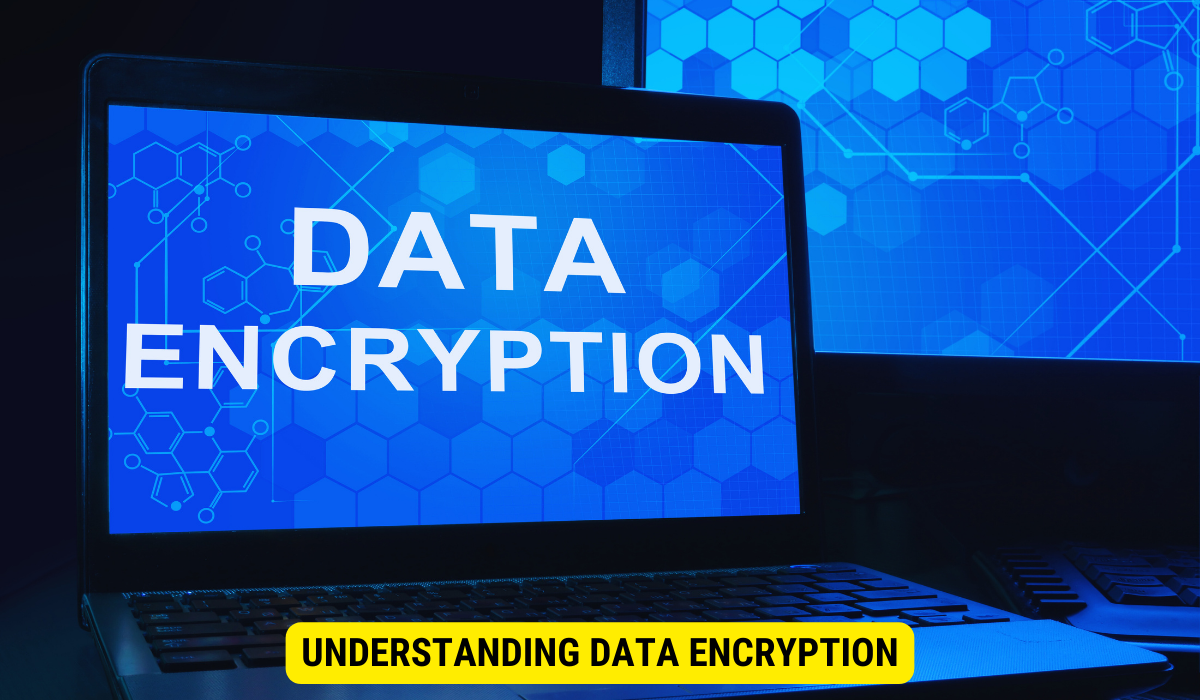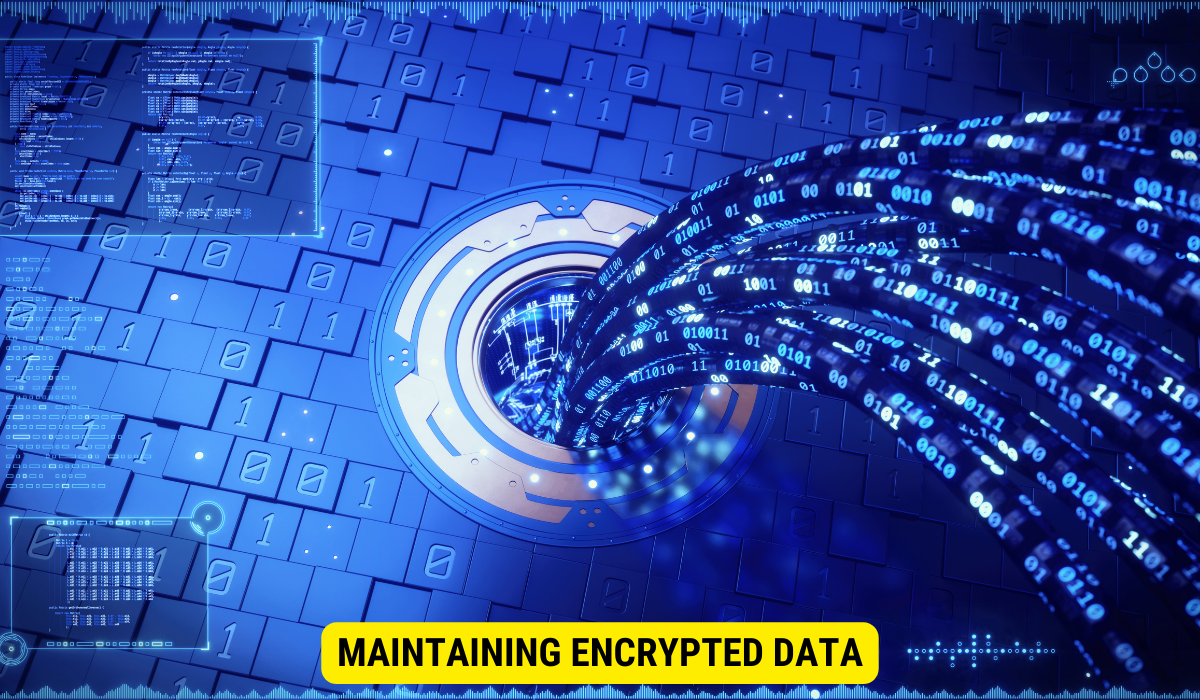Encrypting data from the cloud to the client is the process of converting data into an illegible format using an encryption algorithm and a key. This ensures that complex information is protected from unauthorized access during transit and at rest in the cloud. The strength of encryption is well-founded by the algorithm’s difficulty and the key’s length and randomness. Regular maintenance and updating of encryption algorithms are crucial to enhance security.
In this digital age, where data is constantly being transmitted and stored in the cloud, the importance of data encryption cannot be overstated. Encryption provides a secure method of protecting sensitive information from unauthorized access, ensuring that only the intended recipient can decipher the data. Together, we will explore the fundamentals of data encryption, the types of encryption methods available, the role of encryption in cloud computing, and the steps involved in encrypting data from the cloud to the client. Additionally, we will discuss the maintenance and regular updating of encryption algorithms to enhance data security.
Understanding Data Encryption

Data encryption is the procedure of converting plain text information into an unreadable format, known as ciphertext, with the help of an encryption algorithm. Ciphertext can be decrypted back into its original form using a decryption key. This process ensures that even if an unauthorized entity manages to intercept the data, they cannot understand its contents.
The Basics of Data Encryption
At its core, data encryption relies on two essential components: an encryption algorithm and a key. The encryption algorithm defines the specific mathematical operations used to transform the plain text into ciphertext, while the key acts as the secret parameter that controls the encryption and decryption processes.
Various encryption algorithms are available, each with its strengths and weaknesses. Some commonly used algorithms include (AES) Advanced Encryption Standard, Data Encryption Standard (DES), and Rivest Cipher (RC4). These algorithms employ different techniques such as substitution, permutation, and bitwise operations to ensure the security of the encrypted data.
The strength of an encryption scheme depends on the algorithm’s complexity and the key’s length and randomness. Well-designed algorithms and long, random keys offer a higher level of security. As technology advances, encryption algorithms must be periodically updated to withstand evolving security threats.
Importance of Encrypting Data
Data encryption plays a vibrant role in safeguarding sensitive information. By encrypting data, organizations can protect their customers’ personal details, financial transactions, intellectual property, and other confidential data from unauthorized access and potential data breaches. Encryption also helps companies comply with regulatory requirements regarding data security and privacy.
Moreover, encryption is not limited to data at rest but extends to transit data. When data is transmitted over networks like the Internet, it is vulnerable to interception. Encrypting the data ensures that it remains unavailable to unauthorized individuals even if it is intercepted.
Furthermore, encrypting data builds customer trust, as they can assured that their information is handled with the utmost care and security. With the increasing number of high-profile data breaches, encryption has become essential in maintaining a secure digital environment.
It is important to note that encryption alone is not sufficient to guarantee data security. Proper key management, secure storage of encryption keys, and strong access controls are also crucial components of a comprehensive data protection strategy.
In conclusion, data encryption is a fundamental technique used to lock sensitive information from unauthorized access safely. It relies on encryption algorithms and keys to transform plain text into ciphertext, ensuring the confidentiality and integrity of data. By encrypting data, organizations can mitigate the risks associated with data breaches and comply with regulatory requirements, ultimately building customer trust.
Types of Data Encryption
When it comes to protecting sensitive information, data encryption plays a crucial role. The two primary types of data encryption are symmetric and asymmetric. Each type offers its advantages and is suitable for different scenarios.
Symmetric Encryption
Symmetric encryption is also known as secret or single-key encryption. It uses a similar key for both the encryption and decryption processes. This means the sender and the recipient must possess the same key to communicate securely.
One of the main benefits of symmetric encryption is its efficiency. The encryption and decryption processes are relatively fast, making it suitable for securing large volumes of data. This efficiency is particularly important in scenarios requiring real-time communication or data transfer.
However, the challenge with symmetric encryption lies in securely allocating the shared key between the sender and the recipient. If the key falls into the wrong hands, the security of the encrypted data is compromised. Various methods, such as key exchange protocols and secure channels, are used to mitigate this challenge and ensure the safe transmission of the key.
Asymmetric Encryption
Asymmetric encryption, also called public-key encryption, is a cryptographic technique that employs two keys: a public key for encoding and a remote key for decryption. The civic key can be freely shared with others, while the private key remains securely stored and only accessible to the intended recipient.
The advantage of asymmetric encryption is its enhanced security compared to symmetric encryption. Asymmetric encryption keeps The private key secret, ensuring only the designated recipient can decrypt the data. This makes it ideal for scenarios where secure communication between multiple parties is required.
However, asymmetric encryption is computationally more expensive and slower than symmetric encryption. Encryption and encryption involve complex mathematical operations requiring significant computational resources. As a result, asymmetric encryption is typically used for securing smaller amounts of data, such as securing communication channels or encrypting sensitive information like passwords or digital signatures.
In conclusion, symmetric and asymmetric encryption are vital in securing data. Symmetric encryption offers efficiency and speed, making it suitable for large-scale data protection. On the other hand, asymmetric encryption provides enhanced security and enables secure communication between multiple parties. Understanding the strengths and weaknesses of each type of encryption allows organizations and individuals to pick the most appropriate way for their precise needs.
Encryption in Cloud Computing
With the advent of cloud computing, data encryption has become crucial for ensuring the security and privacy of data stored and processed in the cloud. Cloud computing bids has various benefits, such as scalability, flexibility, and cost-effectiveness, but it also introduces unique security challenges.
Role of Encryption in Cloud Security
Encryption is pivotal in cloud security by safeguarding data at rest, in transit, and in use. Data stored in the cloud should be encrypted to ease the risk of unlawful access or data leakage in case of a security breach. Encryption protects transferred data between the user’s device and the cloud service provider’s servers.
By encrypting data, even if a cybercriminal manages to breach the cloud provider’s security measures, they would only gain unreadable access to encrypted data without the corresponding decryption key. This extra layer of protection helps minimize the impact of data breaches.
Challenges in Cloud Data Encryption

While data encryption is essential in cloud computing, it also presents some challenges. One challenge is the secure storage and management of encryption keys. Cloud service providers must implement robust key management systems to ensure that encryption keys are securely stored and only accessible to authorized users.
Another challenge lies in the potential performance impact of encryption on cloud services. Encryption and encryption can introduce additional computational overhead, affecting service responsiveness. Balancing data security and performance is crucial when implementing encryption in cloud environments.
Steps to Encrypt Data from Cloud to Client
Encrypting data from the cloud to the client involves several essential steps to ensure a secure and reliable process.
Choosing the Right Encryption Method
The first step is to determine the appropriate encryption method based on the specific requirements and constraints of the cloud environment. Consider data sensitivity, performance impact, compatibility with existing systems, and regulatory compliance.
By carefully selecting the encryption method, organizations can balance security and efficiency, ensuring the chosen encryption scheme meets their needs.
Implementing Encryption
Once the encryption method has been selected, it is crucial to implement it correctly. This involves integrating the chosen encryption algorithm into the cloud infrastructure and configuring the encryption parameters, such as key length and encryption mode.
Organizations must also consider how encryption keys are generated, distributed, and managed. Implementing a robust key management system ensures that encryption keys are properly protected and controlled throughout their lifecycle.
Maintaining Encrypted Data

Encrypting data is not a one-time process; it requires unending care and regular updates to ensure the highest level of security.
Regularly Updating Encryption Algorithms
As encryption algorithms are susceptible to vulnerabilities and attacks, monitoring advancements in cryptography and updating encryption algorithms accordingly is crucial. By staying up-to-date with the latest encryption standards, organizations can strengthen their data protection measures and stay ahead of emerging threats.
Monitoring and Auditing Encrypted Data
Continuous monitoring and auditing of encrypted data are vital to detect and respond to potential security incidents promptly. Monitoring tools and automated encryption management systems can help identify suspicious activities and ensure compliance with data security standards and regulations.
Additionally, organizations should regularly review their encryption implementation to identify potential weaknesses or opportunities for optimization. Conducting periodic assessments and penetration tests can help identify vulnerabilities and ensure the overall effectiveness of the encryption strategy.
Key Takeaways
- Encryption is Essential: In the digital age, encryption is vital for protecting data from unauthorized access, both while in transit and at rest.
- Symmetric vs. Asymmetric: Symmetric encryption uses one key for both encryption and decryption, whereas asymmetric encryption uses two keys: a public key for encryption and a private key for decryption.
- Cloud Security: Encryption is pivotal in cloud security, safeguarding data at all stages – at rest, in transit, and in use.
- Challenges: While encryption is crucial, it comes with challenges like secure key management and potential performance impacts on cloud services.
- Regular Maintenance: To ensure continued data security, it’s vital to regularly update encryption algorithms, monitor encrypted data, and conduct periodic assessments.
FAQs
What is data encryption?
Data encryption is the procedure of converting plain text information into an unreadable format (ciphertext) using an encryption algorithm and a key.
What are the primary types of data encryption?
The two main types are symmetric encryption (single key for both encryption and decryption) and asymmetric encryption (public key for encryption and isolated key for decryption).
Why is encryption crucial in cloud computing?
Encryption ensures data security and privacy for information stored, processed, and transferred in the cloud, mitigating risks of unauthorized access and data breaches.
How can one choose the right encryption method for their needs?
To select the best encryption method, consider data sensitivity, performance impact, system compatibility, and regulatory compliance.
Why is ongoing maintenance important in encryption?
Encryption requires regular updates to address vulnerabilities and keep up with advancements in cryptography, ensuring optimal data protection.
Conclusion
As the volume of data transmitted and stored in the cloud increases, the need for robust data encryption becomes paramount. Encryption is a controlling tool for protecting sensitive information from illegal access, ensuring data integrity, and building customer trust. Understanding the basics of data encryption, selecting the appropriate encryption method, and implementing a secure encryption strategy are crucial steps in safeguarding data from the cloud to the client. By regularly maintaining and updating encryption algorithms, organizations can stay ahead of evolving security terrorizations and maintain a strong defense against potential data breaches.
